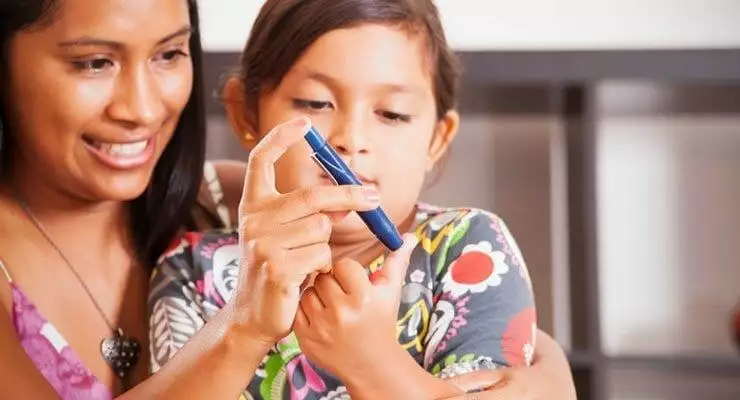Normally, the immune system protects the human body from viruses and bacteria. Much like a microscopic game of Pac-Man, the tiny white cells open up and engulf the invaders until there are none left to create illness in the body.
However, some individuals have immune systems that malfunction, and as in the case of juvenile diabetes, the immune system attacks the insulin producing cells of the pancreas. In addition, these cells may be destroyed by other diseases that injure or harm the pancreas. Thus, little or no insulin is produced.
The Role of Insulin in the Human Body
Usually, insulin is a hormone produced by the special cells in the pancreas that are stimulated by blood sugar, carbohydrates and starches. After digestion is completed, the sugar, or glucose, enters the bloodstream to feed all the body cells. The insulin acts like a key and opens the door to the body cells so the food can get in and feed the cells. Without insulin, the cells starve and the sugar circulates in the bloodstream and may destroy other body organs. In addition, the body has to rely on other sources for food that may not always be available or cause harm to the tissues and organs.
Signs and Symptoms of Juvenile Diabetes
Being aware of the signs and symptoms of childhood diabetes, also known as Type 1 diabetes, is an important first step to managing the disease. Children and teenagers at any age can develop the condition, and even babies may become insulin dependent. Watch for these indicators of juvenile diabetes:
- The first symptom is usually a dry mouth with excessive thirst. As the sugar builds up in the blood, dehydration follows with a vengeance. The child will be looking for a drink constantly.
- Weight loss will occur as the child’s body is not being nourished. They will drop weight quickly as you can see it in their clothes.
- Girls with juvenile diabetes will have frequent vaginal yeast infections and babies may develop a diaper rash from the yeast, Candida.
- Children with diabetes complain of fatigue. The body cells are not receiving nourishment and the child becomes lethargic.
- Extreme hunger is a sign that they are not getting sugar into the cells and their body is starving.
- Blurred vision occurs when the blood sugar levels are high in bloodstream. A child may state that something is “fuzzy,” or they have accidents because they can’t see well and may appear clumsy.
- A child with diabetes may irritable or cry easily. Although moodiness is normal to some degree, the child will exhibit unusual behavior that isn’t normal for them.
- Frequent urination is due to the high blood sugar that forces the kidneys to make more urine.
Signs of an Emergency Diabetic Crisis?
Diabetes is a serious disease and can cause coma and even death. If the blood sugar climbs high enough, the child may go into diabetic ketoacidosis, or DKA. Fortunately, most people with diabetes live long and healthy lives. Luckily, the early signs and symptoms of juvenile diabetes are easy to spot once the parent is aware of the disease, and management of diabetes can be accomplished with support and the instruction of a healthcare provider.
- If a child or teenager is having severe symptoms of a diabetic crisis, call 911 or take the child to the emergency room immediately.
- Shakiness, an alteration of consciousness, such as fainting spells or becomes non-responsive.
- The child or teenager becomes confused and disoriented. They may also become extremely irritable or angry.
- A strong fruity odor to breath is from the high blood sugar.
- Complaint of abdominal pain or stomach ache.
Watch for Signs of Diabetes
Juvenile diabetes has become more prevalent in recent years and parents should be aware of the signs and symptoms. If you have any suspicions about diabetes and your child, contact your healthcare provider.





